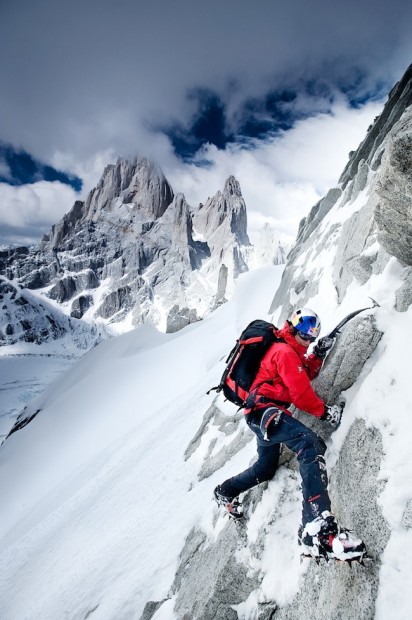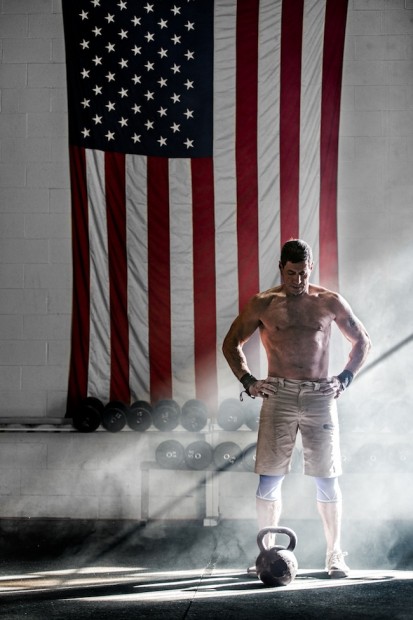
When you are 10,000 feet above sea level, worrying about frostbite and trying to capture a photo of a mountaineer summiting a mountain, it can be difficult to focus on your image quality. You have to think quickly and know your gear inside and out. In the midst of a photo shoot, it’s easy to get distracted and disorganized about your images. You want to please the client and keep moving things along. But being in a rush and going with your gut instincts alone might mean you’re sacrificing quality. Professional extreme sports photographer Corey Rich has made a name for himself by capturing amazing images under all sorts of volatile conditions. To make sure he gets a great photo every time, no matter where he is in the world, Corey keeps in mind the four elements of a good photo.
According to Corey, successful photos happen when the photographer seamlessly integrates light, composition, moment, and the image’s front and back. Take a look at how he thinks through each of these elements during a photo shoot.

Learn how to capture the extreme in Action Sport Photography with Red Bull Photographer Corey Rich. Shop now.
Light
When analyzing light, focus on quality, direction, and temperature. Quality refers to the hardness or softness of the light. This can be affected by time of day and the size of the light source. The direction of light changes a photo’s look dramatically. A subject may be front lit, back lit, side lit or lit from above or below. Temperature varies by light source, with some types of light giving off an orange cast and others bathing a scene in cool hues. Once you’ve looked at the existing light and taken note of its characteristics, you can brainstorm about how it can be utilized and altered. Will you use diffusion material over a window or light to make it softer? Would a colored gel adjust the temperature to fit the mood you’re trying to express? How can you position your model to create various directions in the light? Try not to feel limited by the light that is already there. You can use modifiers and creative posing to create multiple looks from just one light source.

Composition
Most photographers are aware of the rule of thirds. This rule suggests that the photographer should place points of interest a third of the way into the frame from any direction. But there’s more to composition than this basic rule. When framing up your image, look at it from a wider view. Make a conscious decision about what you want to include in the photograph and what you want to omit. Move around with the camera to try out different perspectives and to see what it looks like when you add or remove pieces from the frame. Pay attention to the corners of the frame. Think about how a vertical or horizontal composition will affect the image. Take control of the entire frame before you take a photo.

Moment
Good photographers know how to click the shutter at just the right moment. This means waiting until the story unfolds. The difference in a model’s expression in a matter of milliseconds can make or break the mood of your image. As you prepare to take a picture, determine what you’re trying to say with the photograph. Each picture tells a story. What is the story you want to tell?

Front/Back

Corey believes that the foreground and background of an image are important enough to warrant their own category in this list of four elements. A background shouldn’t distract from the focal point. Ideally, it should add interest on its own. Rather than just using the environment that happens to be behind your model, go out of your way to choose a background that makes sense for the goal of your shoot. Look for clean backgrounds or complex backgrounds that add to the story you are trying to tell. Move your subject in front of the background and then check the frame carefully for distractions, such as any object that aligns with your subject. Follow the same process for foregrounds. Use an object or feature in front of the subject to frame or to add interest. Decide if you want the foreground to be in focus or out of focus. These decisions will help you get the photos you want so you don’t have to rely on chance.
During a shoot, when you find yourself in a frenzy of adrenaline and excitement, remember to slow down and evaluate these four elements. Think about how you can alter light, mix up composition, choose the right moment, and include interesting foregrounds and backgrounds in your scene. Taking control of the key elements of a photograph leads to powerful, professional-grade images that move beyond candid snapshots.
Learn how to capture the extreme in Action Sport Photography with Red Bull Photographer Corey Rich. Shop now.



